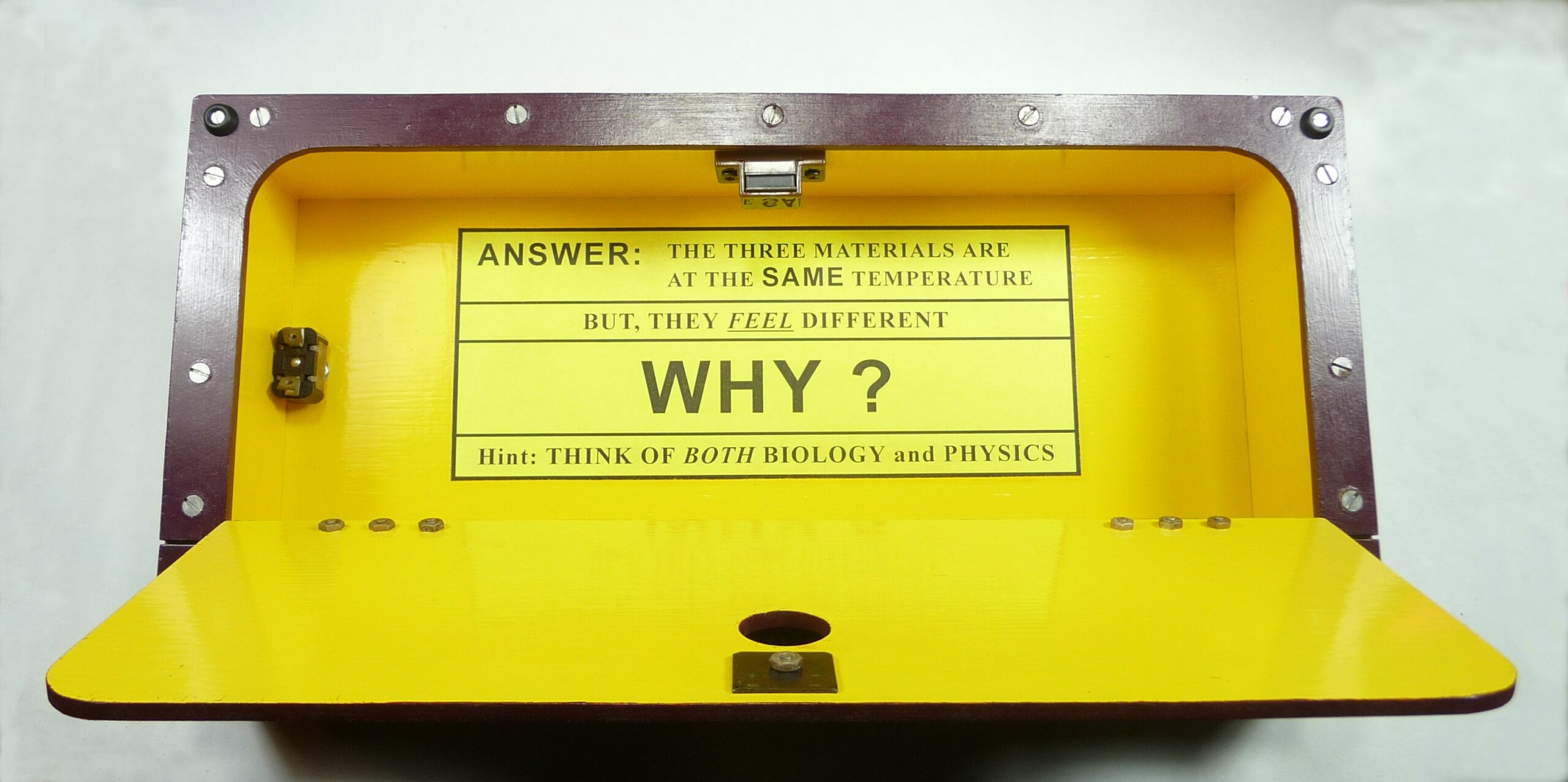 by: Martin Sagendorf
by: Martin Sagendorf
An Easy Question: Which is warmer – which is cooler?
In the strictest sense, it’s a matter of energy. And we use temperature as a measure of energy level. As we all know, the greater the energy level, the higher the temperature… But, although this is absolutely true; sometimes it’s not exactly what we perceive in everyday life. When asked, we all can testify that when we touch a piece of metal we’ll say it feels cold. But is it really cold? Is it or isn’t it ‘cold’?
The Answer Is…
… very simple. If the piece of metal is at room (ambient) temperature it cannot be ‘cold’ – it must be at the same temperature as the temperature of the room.
But First:
Let’s discuss ‘perceived temperature’: this is what we ‘think’ the temperature is. It isn’t always the actual temperature (of the object we touch). Thus we enter a wonderful combination of both physics and biology. Physics describes the absolutes. Biology describes the biological reactions (interpretations) of our physical world.
It’s a matter of thermal conductivity and our nerves. Some materials are good conductors of heat (energy) and some are not. Our nerves sense only temperature – so if thermal energy is rapidly removed from the tissues surrounding our nerve endings (like at our finger tips), our nerves sense that the temperature ‘they feel’ is cooler – e.g. the material is removing thermal energy from the body tissue surrounding the nerve ends at a rate faster than our body can re-supply energy to the tissues – thus our nerves sense this as ‘cooler’.
Now:
A truly illustrative and memorable way to present the question:
Use a construction that provides a means of ‘feeling’ the temperature of three different materials: all three of differing thermal conductivities – low, medium, and high – a simple box having squares of ceramic, wood, and aluminum. The ceramic and aluminum pieces exhibit nearly the same thermal conductivity, but the aluminum has just a little better thermal conductivity. The wood has a relatively low thermal conductivity.
This box is 17” wide, 8” high, and 3” deep.
In The Classroom, Discuss:
Thermal energy in materials
Temperature (as a measure of thermal energy)
Conductivity (of thermal energy)
[note that you haven’t yet presented the biological aspect of the students’ upcoming measurement of what’s warmer or cooler]
The Thermal Conductivity Exercise:
Begin by drawing a three column ‘Vote List’ on the classroom board (ALUMINUM – WOOD – CERAMIC).
[this is a little of a deliberate distraction, but flip the switch to ON and count to five seconds before starting]
Have the students, one-by-one, ‘test’ (by touching) the three materials and marking their vote on the board.
Total the votes.
Ask the class if this makes sense… that the aluminum (or perhaps the ceramic) piece is the coolest? Ask, “Why is this so?”… “Is it because the metal or ceramic is heavier?”… Or, “Is it because the wood is darker in color?”
Now, turn the box to show its insides – that there’s nothing inside the box. The three pieces of material MUST be at the same temperature! – Room Temperature. If any students still doubt you, use an IR thermometer to prove your point!
And Finally:
The really fun part of the lesson: Ask the class, “Why did so many people think that one material is ‘cooler’ than the other two materials?” Don’t give the answer – guide the discussion – let the class discover the answer.
Marty Sagendorf is a retired physicist and teacher; he is a firm believer in the value of hands-on experiences when learning physics. He authored the book Physics Demonstration Apparatus. This amazing book is available from Educational Innovations – it includes ideas and construction details for the creation and use of a wide spectrum of awe-inspiring physics demonstrations and laboratory equipment. Included are 49 detailed sections describing hands-on apparatus illustrating mechanical, electrical, acoustical, thermal, optical, gravitational, and magnetic topics. This book also includes sections on tips and hints, materials sources, and reproducible labels.

